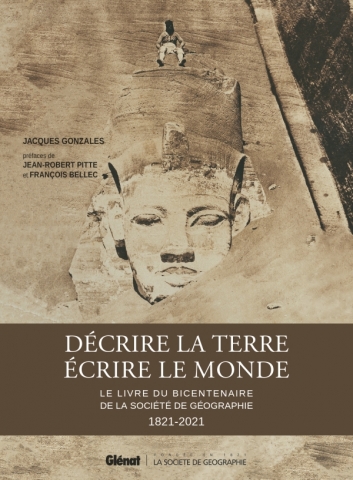
Moving Frames: Photographs in German Cinema
By Carrie Collenberg-González and Martin P. Sheehan (eds.)
Publisher: Berghahn Books
Recommended by Temenuga Trifonova
Numerous recent studies have explored the complex relationship between film and photography, challenging the traditional association of cinema with motion and time, and of photography with stillness and timelessness; none, however, has so far approached this subject within a specifically national context, as Carrie Collenberg-González and Martin Sheehan’s edited volume Moving Frames: Photographs in German Cinema does. Drawing on David Campany’s distinction between film and photography in terms of the photograph’s stillness and its status as evidence (intricately related to memory and history), Collenberg-González and Sheehan argue that the primary critical role of photographs in cinema is that of rupture, not only insofar as stillness is defined by its disruption of motion, and motion by its disruption of stillness, but also in terms of rupturing established beliefs about truth, time, space, representation, life, and death. What makes this volume particularly original is the way in which the editors—taking their cue from Sabine Hake’s study German National Cinema (2002) as a reflection of a series of radical breaks in German political history—reveal the central place the notion of the photograph as “rupture” occupies in a specifically German cinematic, cultural, and political context.
Contributors to the volume explore a wide range of subjects, including: the significance of photographs in “Zille films” (commercial street films that tried to emulate Heinrich Zille’s drawings and sketches); photography’s increasing power to challenge established notions of power, gender, and representation during the Weimar period; the attempts of Adenauer films (produced between 1949 and 1963) to come to terms with the Nazi past by investing photographs with a redemptive power; Wim Wenders’ incorporation of the documentary style of Walker Evans’ photobook American Photographs (1938) to reflect on the American colonization of the West German psyche in the postwar period; the function of the photograph in experimental East German films; the conventional use of photographs in what Eric Rentschler has dubbed the “cinema of consensus” (1990s star-driven mainstream German cinema); photography’s role in mediating personal and public memory and the structural similarities between photographs and trauma in German films dealing with the Holocaust, the GDR, and the Gastarbeiter period; Christian Petzold’s use of computer-generated photographs to challenge the fantasy of “the good life” (Lauren Berlant) depicted in a photograph; and the use of photographs in German zombie horror films.
 Décrire la Terre, Écrire le Monde: Le Livre du Bicentenaire de la Société de Géographie 1821-2021
Décrire la Terre, Écrire le Monde: Le Livre du Bicentenaire de la Société de Géographie 1821-2021
By Jacques Gonzalès
Published by: Editions Glénat
Recommended by Hélène B. Ducros
The COVID-19 pandemic dominated 2021, so that many anniversaries went by without notice. The bicentennial of the French geographical society, the Société de Géographie, was one of them. In Décrire la Terre, Écrire le Monde, Jacques Gonzalès makes it possible to partake in the commemoration through a splendidly documented volume that retraces the history of this French “société savante” from its early beginnings in 1821, when it emerged as the first “geographical” society in the world, to more recent developments. By chronicling the ways in which various men (women have been mostly absent from that history, with some notable exceptions) have thought, shaped, promoted, and utilized the institution across two tumultuous centuries, this retrospective constitutes a window into a fascinating world where explorers have mingled with statesmen, earth scientists, oceanographers, seafarers, writers, cartographers, hydrographers, climatologists, and more. Focused on discovering, understanding, and explaining the planet’s cultural and physical diversity, these intellectuals have all been driven by questions of “where, why, how.” Structured as a meeting place where ideas come together, the learned society had, early on, set its mission to not only reveal geography to as wide a public as possible, but also to inspire an appreciation for it as a scientific discipline (“faire connaître et aimer”), as well as to “ensure the promotion and advancement of geography in all its diversity.” Indeed, over the last two centuries, the Société has operated to build bridges between observations and a discipline of geography, through awards and prizes, conferences, and even the sponsoring of exploratory expeditions.
The anniversary volume is an opportunity to identify milestones for an institutional project that has put geography at the center of scientific knowledge production about how humans live in the world. Among the Société’s founding fathers, presidents, and influential figures, readers—whether geographers or not—will recognize names that have surpassed the boundaries of one discipline, from Champollion, Jules Verne, and Alexandra David-Neel, to Humboldt or Chateaubriand, all showing that early French geography stimulated a breadth of thinkers. Beyond the descriptive, chronological digest featuring the many characters who have made the Société what it is today, the value of the volume lies in its illustrations: map collections, rare photos, correspondence, travelogues—all from the Société’s archives. By retracing the history of an institution and the people who designed it, the book more widely highlights a field of inquiry and a method for approaching the world and making sense of it. While the volume does not address critical questions that have been at the heart of geography’s self-reflection and research pathways since at least the 1950s, it nonetheless prepares readers for taking stock of disciplinary imperatives and for engaging further into a field that has not always received unanimous acclaim but yet remains central to how we perceive, learn about, and write about the world. Very accessible, the book will appeal to “geophiles” of all stripes. For contemporary geographers interested in analyzing disciplinary history and evolving epistemologies, the book may open a needed discussion about what the Société could or should become in the future and ultimately about how to maintain geography relevant, engaging, and engaged to face the challenges ahead of us, from geopolitics to climate change or global health.
Published on April 18, 2022.




